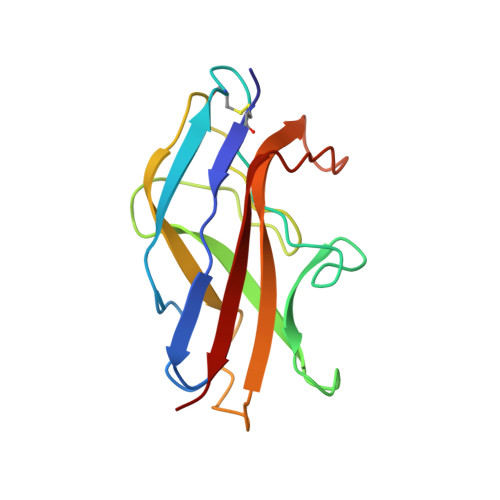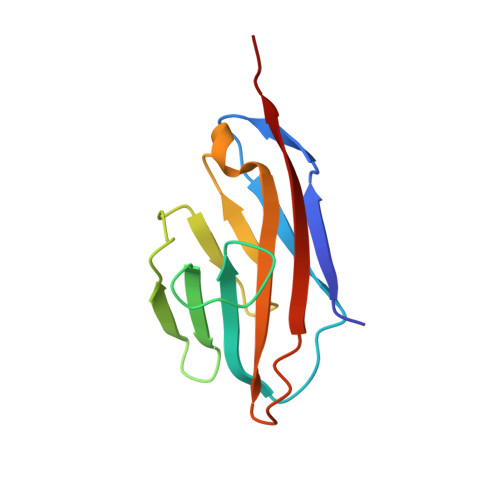Binding of Dr Adhesins of Escherichia Coli to Carcinoembryonic Antigen Triggers Receptor Dissociation.
Korotkova, N., Yang, Y., Le Trong, I., Cota, E., Demeler, B., Marchant, J., Thomas, W.E., Stenkamp, R.E., Moseley, S.L., Matthews, S.(2008) Mol Microbiol 67: 420
- PubMed: 18086185
- DOI: https://doi.org/10.1111/j.1365-2958.2007.06054.x
- Primary Citation of Related Structures:
2QSQ, 2QST, 2VER - PubMed Abstract:
Carcinoembryonic antigen (CEA)-related cell adhesion molecules (CEACAMs) are host receptors for the Dr family of adhesins of Escherichia coli. To define the mechanism for binding of Dr adhesins to CEACAM receptors, we carried out structural studies on the N-terminal domain of CEA and its complex with the Dr adhesin. The crystal structure of CEA reveals a dimer similar to other dimers formed by receptors with IgV-like domains. The structure of the CEA/Dr adhesin complex is proposed based on NMR spectroscopy and mutagenesis data in combination with biochemical characterization. The Dr adhesin/CEA interface overlaps appreciably with the region responsible for CEA dimerization. Binding kinetics, mutational analysis and spectroscopic examination of CEA dimers suggest that Dr adhesins can dissociate CEA dimers prior to the binding of monomeric forms. Our conclusions include a plausible mechanism for how E. coli, and perhaps other bacterial and viral pathogens, exploit CEACAMs. The present structure of the complex provides a powerful tool for the design of novel inhibitory strategies to treat E. coli infections.
Organizational Affiliation:
Department of Microbiology, University of Washington, Seattle, WA 98195-7242, USA.
















